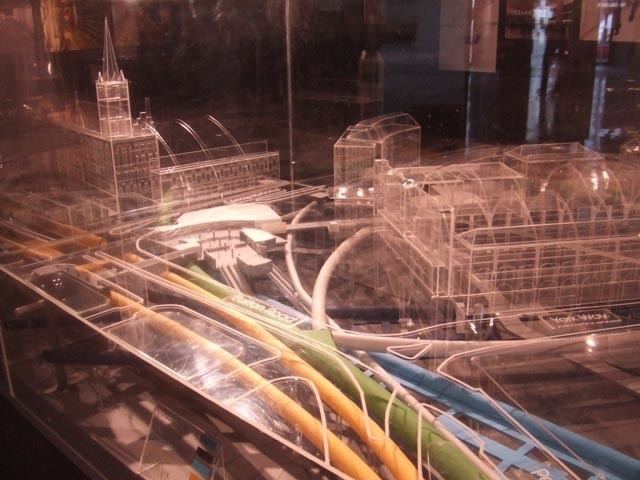 | ||
The metropolis of London has been occupied by humans for two millennia, and has over that time acquired a large number of subterranean structures.
Contents
- This is what subterranean london looks like
- Water and waste
- Transport
- Defence
- Utilities
- Disused
- References

These have served a number of purposes:
This is what subterranean london looks like
Water and waste
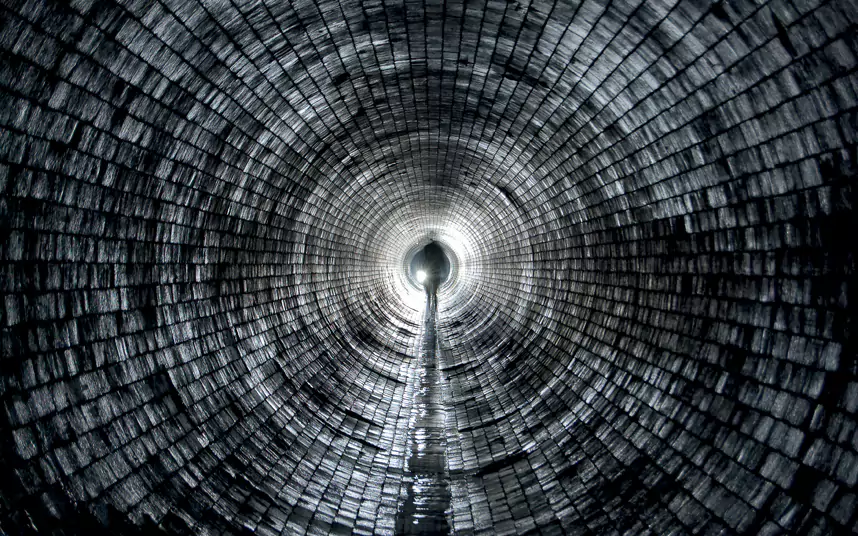
Since its foundation, the Thames has been at the heart of London. Many tributaries flow into it and over time these have changed from sources of water to open sewers and sources of disease.
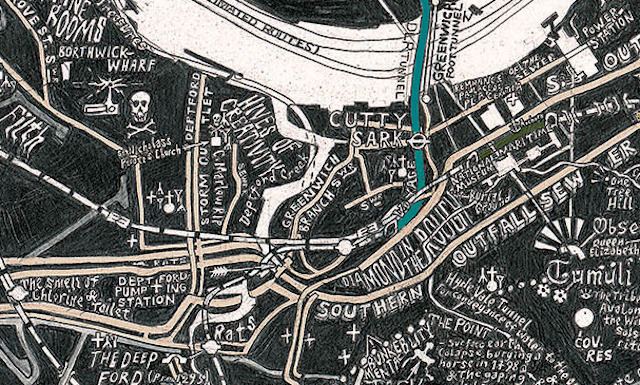
As the city developed from a cluster of villages, many of the existing rivers were buried or canalised: see subterranean rivers of London.
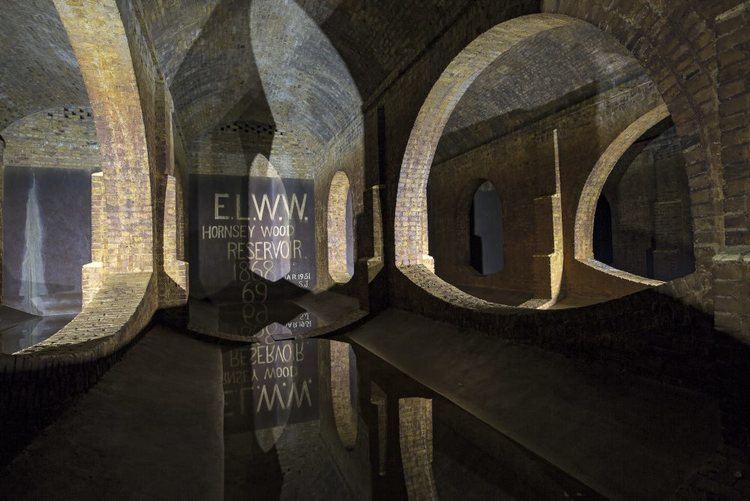
The rivers failed to carry the sewage of the growing metropolis. The resulting health crisis led to the creation in the late nineteenth century of the London sewerage system, designed by Joseph Bazalgette, one of the first modern sewer systems in the world.
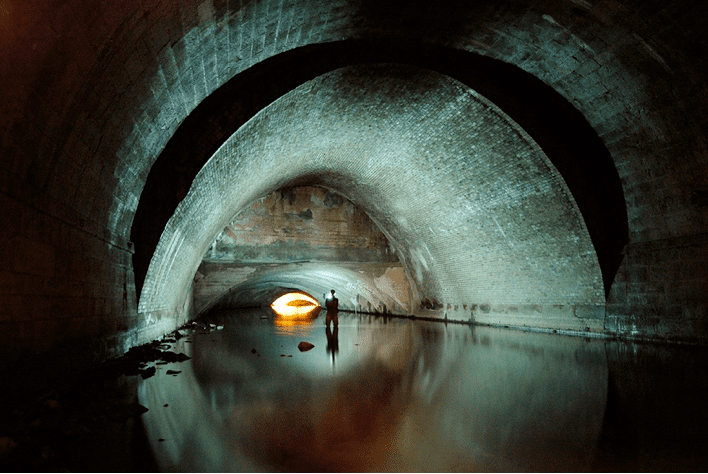
The Thames Water Ring Main is a notable modern piece of large-scale water supply infrastructure, comprising 80 km of wide-bore water-carrying tunnels.
Transport
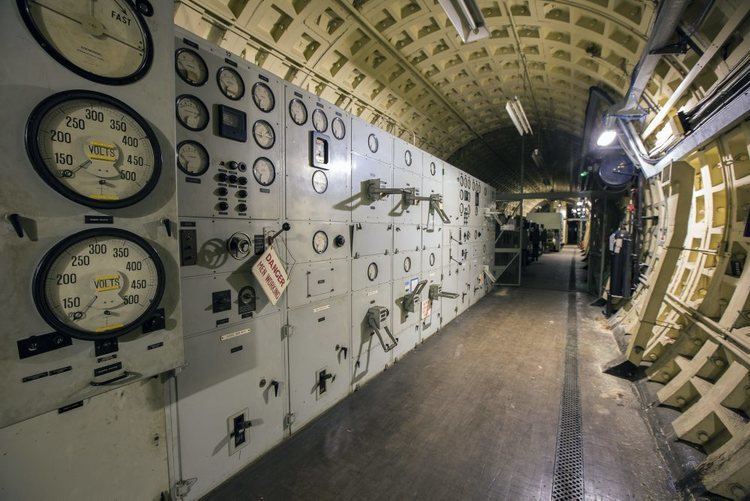
The London Underground was the first underground railway in the world, and remains one of the most extensive. Its construction began in 1860 with the 3.7-mile (6.0 km) Metropolitan Railway from Farringdon to Paddington. It was opened in 1863, having caused much disruption by the use of "cut and cover" techniques, which involved digging large trenches along the course of existing roads, and then constructing a roof over the excavation to reinstate the road surface. Tube railways, which caused little disruption because they were constructed by boring a tunnel, arrived in 1890, with the opening of the City and South London Railway, a 3.5-mile (5.6 km) line from Stockwell to King William Street. It was planned as a cable hauled railway, but the advent of electric traction resulted in a simpler solution, and the change was made before the cable system was built. It thus became the world's first electric tube railway. Although the whole system comprises 249 miles (401 km) of track, only about 45 per cent is actually below ground.
Kingsway has an almost intact underground passageway for trams which is rarely open to the public. See Kingsway tramway subway
Numerous tunnels underneath the River Thames have been created, ranging from foot-tunnels to road tunnels and the tunnels of the Underground. The first of these, the Thames Tunnel, designed by Marc Brunel, was the first tunnel known to have been successfully constructed underneath a navigable river. It ran for 1,200 yards (1,100 m) from Rotherhithe to Wapping, and was opened in 1843. It was used as a pedestrian subway, as the finance was not available to allow the company to build the intended access ramps for horse-drawn traffic, and was later used by the East London branch of the Metropolitan Railway from Shoreditch to New Cross. It was then refurbished in 2011 and now forms part of the London Overground network.
Several railway stations have cavernous vaults and tunnels running beneath them, often disused, or reopened with a new purpose. Examples include The Old Vic Tunnels, beneath London Waterloo station, and the vaults beneath London Bridge station, formerly utilised by the theatre company Shunt.
Defence
Many underground military citadels have been built under London. Few are acknowledged to exist, and even fewer are open to the public. One exception is the famous, and now very popular tourist destination, Cabinet War Rooms, used by Winston Churchill during the Second World War.
During the Second World War, parts of the Underground were converted into air-raid shelters known as the deep-level shelters. Some of these were converted for military and civil defence use, such as the now-disused Kingsway telephone exchange.
Other civil defence centres in London are wholly or partly underground, mostly as a legacy of the Cold War. Many other subterranean facilities exist within the centre of government in Whitehall, many linked by underground tunnels.
In December 1980, a journalist for the New Statesman revealed the existence of secret tunnels linking government buildings, which he claimed would be used in the event of a national emergency. It is believed these tunnels link to Buckingham Palace.
The same journalist, Duncan Campbell, discussed these facilities in more detail, in the book War Plan UK: The Truth about Civil Defence in Britain (1982). Peter Laurie also wrote a book about these facilities, titled Beneath the City Streets: A Private Inquiry into the Nuclear Preoccupations of Government (1970).
Utilities
London, like most other major cities, also has extensive underground infrastructure for electricity distribution, natural gas supply, water supply, and telecommunications, including the BT copper local loops and optical fibre from numerous suppliers.
Starting in 1861, Victorian engineers built several miles of purpose-built subways large enough to walk through, for running gas, electricity, water and hydraulic power pipes through. These works removed the inconvenience of continually excavating highways to allow access to underground utilities.
Disused
Some underground structures continue to exist in London even though they are no longer in use
